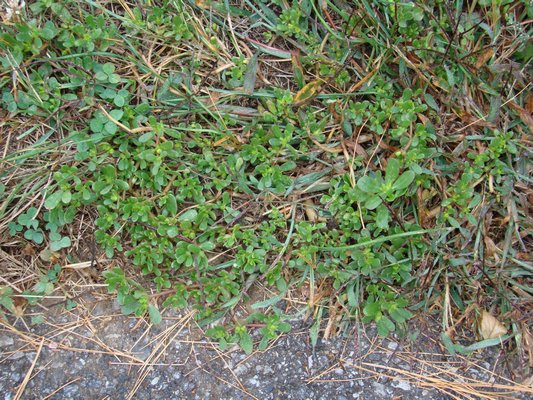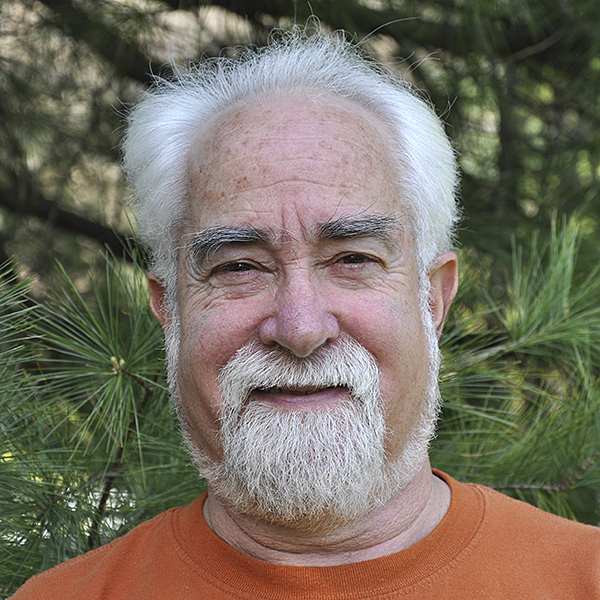

If you’re looking for a family of plants to grow out here that require little to no care, have few if any disease and insect problems—unless you over water and over feed them—rarely if ever need to be watered and will grow in the sandiest of soils, then look no further than the succulents.
There are hundreds if not thousands of plants in this group but only about a hundred winter-hardy ones that we can grow here that can be quite interesting, colorful and even dramatic.
When I first moved out here, the two succulents I came across were Yucca filamentosa, commonly known as Adam’s needle, and Opuntia compressa, or the prickly pear cactus. Both grew near my house in a wild grassy area that was once part of the Shinnecock Hills Golf Club. The yuccas kind of sneaked up on me. I remember walking through this grassland and noted a tall, thick green stalk emerging from some sword-like stiff leaves. The leaves were coarse and flat with a pointed, almost needle-sharp tip—hence, Adam’s needle—but from the center rosette of the plant emerged this shoot. Imagine an asparagus spear on steroids. The shoots are about an inch or more in diameter and over a period of weeks they reach toward the sky. When they reach 5 feet or so, creamy white bell-shaped flowers appear. As the flowers open, a very special moth shows up that has a unique relationship with the yucca. The moth is the pollinator for the yucca and you can learn more about this unique affair here: https://bit.ly/2NTC0wJ.
As the flowers mature and seeds are created, a pod is produced that in and of itself is a piece of Mother Nature’s art. As the pod ripens, it ruptures and sends out yucca seeds off into the wind by silken parachutes.
These yuccas used to be easy to find but are now pretty uncommon in the wilds of the Hamptons. The plant is not without its little controversy as some call it a broadleaf evergreen while others, like me, think of it as a succulent. Nonetheless, this is an East End native at the northern end of its range that should be cultivated. But here I put “cultivated” in quotes because once planted and established the yucca should be ignored, but greatly admired. It doesn’t need to be watered and, in fact, if it’s irrigated or regularly watered it will do very poorly. It does grow on sand dunes on the barrier beaches on the ocean side and along the bay sides of the North and South Forks about 20 feet away from the high tide. Never feed it. It can be occasionally tidied up and they will occasionally send out “pups” or side shoots that can be carefully removed and replanted. But otherwise, simply neglect this plant and admire it.
There are some “cultivated” or ornamental varieties of this plant. The variegated form often sold under the name “Color Guard” has a white stripe in the leaves while “Garland’s Gold” has a more yellow stripe. The variety “Excalibur” has a more uniform, somewhat dwarf habit than the rest of the species.
The prickly pear cactus is also an East End native succulent but much rarer than the yucca. It’s a paddle cactus that grows nearly flat against the ground and can be easily propagated by just cutting off a paddle and laying it on sandy soil where it will shrivel, but root and come back to life. There is one caveat. If you turn the paddle over and place it on the soil with the wrong side facing up, it will not root. So be careful to not turn the paddle over and plant it or lay it horizontally on sandy soil with the top always remaining the top. Be careful when handling the paddle because this is a cactus and—yes, it does have spines and, yes, they can make for a very uncomfortable encounter. The spines are tiny and occur in clusters along the top and edge of the paddle and can be very, very irritating.
Opuntia compressa flowers in late June and into July with light lemon-yellow flowers that are about 2 inches across. When the flowers are fertilized, they form a red fruit that is similar to the cactus fruit sold in many markets but much smaller. It is not very edible but is a favorite of several local animals. Like the yucca, the cactus has times when it’s not terribly attractive but, after a long and shriveling winter, it swells up in May and June, turns a rich green and then flowers.
Some garden centers sell this species, but again, it’s a plant that needs to be in poor, sandy soil and neglected. Give it irrigation and fertilizer and you’ll kill it. Like the yucca, plant it, let it establish and then ignore and adore. It needs to be in a spot that’s sunny, well drained without any wet spots and it too will do well anywhere the soil is sandy and few other plants will grow. There’s an interesting article on this cactus that you can find here: https://bit.ly/2Ju6yBK.
Those are the two natives. A non-native group that is just if not more fascinating are the Sempervivums, also called “semps,” though you may know them as “hen and chicks.” These plants are much smaller than the cactus and yucca and can adapt to more diverse growing conditions but they are very much succulents. I’ve seen them cover the roof of a garage in Port Washington, and I’ve seen them growing on 2-ton boulders at the top of a mountain. The linking thread here, again, is that once planted they too need to be ignored. They are easily propagated (using the chicks). They do flower, and once planted they can simply be left alone for decades or longer. Semps come in a range of sizes from 4 to 5 inches in diameter, to as tiny as a quarter of an inch in diameter. The “leaves” can be green though many have shades of red in them. Some of the most spectacular semps look like spiders have cast perfectly symmetrical silks from point to point across the plant, leaving an incredible design that defies logic but can be quite striking.
And here’s a bit of edible garden trivia: There is a weed in your garden right now that’s a succulent. Know what it is? We call it purslane but technically its name is Portulaca oleracea and, yes, it’s a relative of the other Portulaca whose common name is the rose moss that’s sold as an ornamental annual ground cover. But the weedy one is also tasty and, when picked young, may be tossed in a salad. It looks much like a miniature jade plant and, while it’s considered an annual (with hardy seeds), if you pull it and leave any part of the plant in tact, it will regrow in days. Just take a single leaf and remove it from the parent plant and place it on soil and it will root and grow another plant. Ah, but like the jade and prickly pear, if you just turn the leaf upside down, it will wither and die.
There are dozens of other succulents, including some cacti, that can be grown out here and they can make a most unique garden if you’ve got the sand. Gwen Moore Kelaidis wrote a wonderful book aptly titled, “Hardy Succulents” (2008, Storey Publishing) which I would urge you to read if this is a plant family you think you might be interested and challenged by. The book will give you lots of ideas and may open up a whole new area of gardening to you. The photographs, by noted horticultural photographer Saxon Holt, will only further heighten your interest. Keep growing.
 More Posts from Andrew Messinger
More Posts from Andrew Messinger